Popular categories
Looking for a yarn?

100% Alpaca
from 3.40 £ /50g
Order DROPS Fabel from Wool Warehouse Direct Ltd

|
DROPS Fabel uni colour 75% Wool, 25% Polyamide |
2.30 £ /50g |
Order |

|
DROPS Fabel 75% Wool, 25% Polyamide |
2.40 £ /50g |
Order |

|
DROPS Fabel long print 75% Wool, 25% Polyamide |
2.60 £ /50g |
Order |
Clicking the ORDER button will redirect you to Wool Warehouse Direct Ltd website
Order DROPS Needles & Hooks
Clicking the ORDER button will redirect you to Wool Warehouse Direct Ltd website
The yarn cost is calculated from the pattern’s smallest size and the yarn’s cheapest product type. Looking for an even better price? You might find it on the DROPS Deals!
Firenze
Knitted men's jumper with raglan and high neck, in DROPS Alpaca and DROPS Fabel. Size: S to XXXL.
DROPS design: Pattern no FA-170
Yarn group A
--------------------------------------------------------
Size: S - M - L - XL - XXL - XXXL
Materials: DROPS ALPACA from Garnstudio
Colour no 7238m, dark olive mix:
300-350-400-450-500-550 g
And use: DROPS FABEL from Garnstudio
Colour no 542p, green mix:
250-300-350-400-450-500 g
DROPS DOUBLE POINTED NEEDLES and CIRCULAR NEEDLE (80 cm) SIZE 5 mm - or size needed to get 17 sts x 22 rows in stocking st with 2 threads = 10 x 10 cm.
DROPS DOUBLE POINTED NEEDLES and CIRCULAR NEEDLE (40 cm and 80 cm) SIZE 4 mm - for rib
-------------------------------------------------------
Alternative Yarn – See how to change yarns here
Yarn Groups A to F – Use the same pattern and change the yarn here
Yarn usage using an alternative yarn – Use our yarn converter here
-------------------------------------------------------
Men Men's Jumpers Men's Basic Jumpersbottom up high neck raglan round neck stocking stitch

100% Alpaca
from 3.40 £ /50g
Order DROPS Alpaca from Wool Warehouse Direct Ltd

|
DROPS Fabel uni colour 75% Wool, 25% Polyamide 2.30 £ /50g Order |

|
DROPS Fabel print 75% Wool, 25% Polyamide 2.40 £ /50g Order |

|
DROPS Fabel long print 75% Wool, 25% Polyamide 2.60 £ /50g Order |
Clicking the ORDER button will redirect you to Wool Warehouse Direct Ltd website
Order DROPS Needles & Hooks
Clicking the ORDER button will redirect you to Wool Warehouse Direct Ltd website
The yarn cost is calculated from the pattern’s smallest size and the yarn’s cheapest product type. Looking for an even better price? You might find it on the DROPS Deals!
- English (UK/cm)
- Česky
- Dansk
- Deutsch
- Eesti keel
- English (US/in)
- Español
- Français
- Íslenska
- Italiano
- Magyar
- Nederlands
- Norsk
- Polski
- Português
- Suomi
- Svenska
- English (UK/cm), Bulgaria
- English (UK/cm), Croatia
- English (UK/cm), Greece
- English (UK/cm), Latvia
- English (UK/cm), Lithuania
- English (UK/cm), Romania
- English (UK/cm), Slovenia
- Česky, Slovakia
Pattern instructions
Dec on each side of the 9 sts in rib in every transition between body and sleeves.
Dec as follows from RS:
BEFORE the 9 sts: K 2 tog.
AFTER the 9 sts: Slip 1 st as if to K, K 1, psso.
Dec as follows from WS:
BEFORE the 9 sts: P 2 twisted tog (i.e. work in back loop of st instead of front).
AFTER the 9 sts: P 2 tog
--------------------------------------------------------
BODY:
Worked in the round on circular needle.
Cast on 168-180-192-204-228-252 sts on circular needle size 4 mm with 1 thread Alpaca and 1 thread Fabel. Work rib = K 3/P 3 for 7 cm. Switch to circular needle size 5 mm, work next round as follows: * K 4, K 2 tog *, repeat from *-* a total of 11-12-13-14-16-18 times, K 3, continue rib as before over the next 15 sts (= mid in the side), repeat from *-* a total of 11-12-13-14-16-18 times, K 3, then work rib over the last 15 sts as before (= mid in the other side) = 146-156-166-176-196-216 sts. Continue with rib over the 15 sts in each side and in stocking st over the remaining sts. REMEMBER THE KNITTING TENSION! When piece measures 18 cm, inc 1 st on each side of the 15 sts in rib in each side. Repeat inc every 6 cm a total of 5 times – work the inc sts in stocking st = 166-176-186-196-216-236 sts. When piece measures 46-47-48-49-50-51 cm, cast off the middle 7 sts in rib in each side = 152-162-172-182-202-222 sts remain on needle. Put piece aside and work the sleeves.
SLEEVE:
Worked in the round on double pointed needles.
Cast on 48-48-54-54-60-60 sts on double pointed needles size 4 mm with 1 thread Alpaca and 1 thread Fabel. Work rib = K 3/P 3 for 9 cm. Switch to double pointed needles size 5 mm. Work next round as follows: Work in stocking st over the first 33-33-39-39-45-45 sts and rib as before over the last 15 sts (= mid under sleeve). When piece measures 11 cm, inc 1 st on each side of the 15 sts in rib. Repeat inc every 4-3-3½-3-3-3 cm a total of 10-12-11-13-12-13 times = 68-72-76-80-84-86 sts – work the inc sts in stocking st. When piece measures 49 cm in all sizes, cast off the 7 mid sts in rib = 61-65-69-73-77-79 sts remain on needle.
Put piece aside and knit another sleeve.
YOKE:
Slip sleeves on to same circular needle as body where armholes were cast off = 274-292-310-328-356-380 sts. Work 1 round with K over K and P over P – AT THE SAME TIME inc 1 st in all transitions between body and sleeves (K this st) = 278-296-314-332-360-384 sts. In all transitions between body and sleeve there are now: P 3, K 3 and P 3 = 9 sts in rib. Continue to work K over K and P over P while at the same time dec for RAGLAN – see explanation above! Repeat dec on every other round a total of 17-18-18-18-18-19 times and then on every round a total of 5-6-8-10-12-12 times. AT THE SAME TIME when 5 dec remain, slip the middle 18-19-20-23-25-27 sts mid front on a stitch holder for neck. Worked back and forth on needle until finished measurements. AT THE SAME TIME cast off at the beg of every row 1 st 2 times in each side (= towards the neck). After all dec for raglan and cast offs for neck, 80-81-82-81-91-105 sts remain on needle.
NECK:
Switch to circular needle size 4 mm. Knit up approx. 22 to 31 sts at the front of neck (incl sts on stitch holder) = 102 to 136 sts. Work 1 round with K over K and P over P while at the same time adjusting no of sts to 102-102-102-114-114-114 (there are now 21-21-21-27-27-27 sts in stocking st over back piece, 27-27-27-33-33-33 sts in stocking st over front piece and 9 sts in stocking st over each sleeve). Continue in rib = K 3, P 3 over all sts - this should work out so that all the raglan sts can be worked as before. When neck measures approx. 20 cm, cast off with K over K and P over P. Fold the neck double towards RS.
ASSEMBLY:
Sew the openings under the sleeves tog.
This pattern has been corrected. Click here to see the correction/s.
New yarn amount in DROPS Fabel:
Colour no 542p, green mix:
250-300-350-400-450-500 g
Diagram
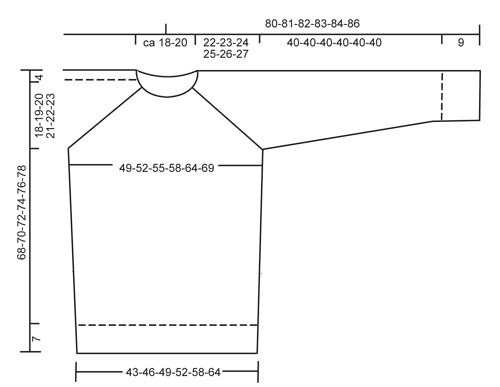
What can you do with our patterns? You can share DROPS patterns online, using the pattern original picture, materials, name and number. But you are NOT ALLOWED to reproduce the complete pattern digitally in any way. Yarn stores are welcome to use the DROPS pattern database to promote the sale of our assortment. You can print out our patterns, make as many copies as you’d like. The only thing we ask is that you don't make any changes / additions to the original printed document. And that the patterns according to the DROPS philosophy are given out to the consumers for free. Editorials that wish to publish our patterns in printed books or magazines can contact us for more information. The sale of garments based on DROPS patterns is permitted as long as they are sold as single items or per order. Further commercial use of the patterns is not permitted. It has to be clearly stated that the garment is made based on a design from DROPS DESIGN. The use of clothing labels of which DROPS DESIGN forms part is conditioned by the inclusion of the following text: “A DROPS DESIGN made by …..”. The use of DROPS photos for marketing purposes/sales is only permitted in connection with the use/sale of DROPS products. The photos may not be cut or edited and the logo should be clearly visible.
We reserve the right to withdraw the permission for use of our patterns at any time, notwithstanding the reason.
Each of our patterns has specific tutorial videos to help you.
These step-by-step tutorials might also help you:
Why is the knitting/crochet tension so important?
Knitting tension is what determines the final measurements of your work, and is usually measured per 10 x 10 cm. It is provided like so: number of stitches in width x number of rows in height - eg: 19 stitches x 26 rows = 10 x 10 cm.
The knitting tension is very individual; some people knit/crochet loosely while others work tightly. You adjust the knitting tension with the needle size, which is why the suggested needle size is only meant as a guide! You need to adjust this (up or down) to ensure that YOUR knitting tension matches the knitting tension provided in the pattern. If you work with a different knitting tension than provided you will have a different yarn consumption, and your work will have different measurements than what the pattern suggests.
The knitting tension also determines which yarns can replace each other. As long as you achieve the same knitting tension you can replace one yarn with another.
See DROPS lesson: How to measure your tension/gauge
See DROPS video: How to make a gauge tension swatch
How do I know how many balls of yarn I need?
The required amount of yarn is provided in grams, eg: 450 g. To calculate how many balls you’ll need you first need to know how many grams are in 1 ball (25g, 50g or 100g). This information is available if you click on the individual yarn quality on our pages. Divide the amount required with the amount of each ball. For example, if each ball is 50g (the most common amount), the calculation will be as follows: 450 / 50 = 9 balls.
Can I use a different yarn than what the pattern suggests?
The important thing when changing from one yarn to another is that the knitting/crochet tension remains the same. This is so that the measurements of the finished piece will be the same as on the sketch provided. It is easier to achieve the same knitting tension using yarns from the same yarn group. It is also possible to work with multiple strands of a thinner yarn to achieve the knitting tension of a thicker one. Please try our yarn converter. We recommend you to always work a test swatch.
Please NOTE: when changing yarn the garment might have a different look and feel to the garment in the photo, due to individual properties and qualities of each yarn.
See DROPS lesson: Can I use a different yarn than the one mentioned in the pattern?
What are the yarn groups?
All our yarns are categorised into yarn groups (from A to F) according to thickness and knitting tension – group A contains the thinnest yarns and group F the thickest. This makes it easier for you to find alternative yarns to our patterns, should you wish to switch yarn. All yarns within the same group have a similar knitting tension and can easily replace each other. However, different yarn qualities have different structures and properties which will give the finished work a unique look and feel.
How do I use the yarn calculator?
At the top of all our patterns you’ll find a link to our yarn calculator, which is a helpful tool should you wish to use a different yarn than suggested. By filling in the yarn quality you wish to replace, the amount (in your size) and number of strands, the calculator will present good alternative yarns with the same knitting tension. Additionally it will tell you how much you’ll require in the new qualities and whether you’ll need to work with multiple strands. Most skeins are 50g (some are 25g or 100g).
If the pattern is worked with multiple colours, every colour will have to be calculated separately. Similarly, if the pattern is worked with several strands of different yarns (for example 1 strand Alpaca and 1 strand Kid-Silk) you will have to find alternatives for each, individually.
Why do you show discontinued yarns in the patterns?
Since different yarns have different qualities and textures we have chosen to keep the original yarn in our patterns. However, you can easily find options among our available qualities by using our yarn calculator, or simply pick a yarn from the same yarn group.
It is possible that some retailers still have discontinued yarns in stock, or that someone has a few skeins at home that they would like to find patterns for.
The yarn calculator will provide both alternative yarn as well as required amount in the new quality.
What size should I knit?
If you think it's hard to decide what size to make, it can be a good idea to measure a garment you own already and like the size of. Then you can pick the size by comparing those measures with the ones available in the pattern's size chart.
You'll find the size chart at the bottom of the pattern.
See DROPS lesson: How to read size chart
Why do I get the wrong knitting tension with the suggested needle size?
The needle size provided in the pattern serves only as a guide, the important thing is to follow the knitting tension. And since knitting tension is very individual, you will have to adjust the needle size to ensure that YOUR tension is the same as in the pattern – maybe you’ll have to adjust 1, or even 2 needle sizes, up or down to achieve the correct tension. For this, we recommend that you work test swatches.
Should you work with a different knitting tension than the one provided, the measurements of the finished garment might deviate from the measurement sketch.
See DROPS lesson: How to measure your tension/gauge
See DROPS video: How to make a tension/gauge swatch
Why is the pattern worked top-down?
Working a garment top-down provides more flexibility and room for personal adjustment. For example it is easier to try the garment on while working, as well as making adjustments to length of yoke and shoulder caps.
The instructions are carefully explaining every step, in the correct order. Diagrams are adjusted to the knitting direction and are worked as usual.
How do I work according to a knitting diagram?
The diagram depicts all rows/rounds, and every stitch seen from the right side. It is read from bottom to top, from right to left. 1 square = 1 stitch.
When working back and forth, every other row is worked from the right side and every other row is worked from the wrong side. When working from the wrong side, the diagram will have to be worked reversed: from left to right, knit stitches are purled, purl stitches are knit etc.
When working in the round every round is worked from the right side and the diagram are worked from right to left on all rounds.
See DROPS lesson: How to read knitting diagrams
How do I work according to a crochet diagram?
The diagram depicts all rows/rounds, and every stitch seen from the right side. It is worked from bottom to top, from right to left.
When working back and forth every other row is worked from the right side: from right to left and every other row is worked from the wrong side: from left to right.
When working in the round, every row in the diagram are worked from the right side, from right to left.
When working a circular diagram you start in the middle and work your way outwards, counter clockwise, row by row.
The rows usually start with a given number of chain stitches (equivalent to the height of the following stitch), this will either be depicted in the diagram or explained in the pattern.
See DROPS lesson: How to read crochet diagrams
How do I work several diagrams simultaneously on the same row/round?
Instructions for working several diagrams after each other on the same row/round, will often be written like so: “work A.1, A.2, A.3 a total of 0-0-2-3-4 times". This means you work A.1 once, then A.2 is worked once, and A.3 is repeated (in width) the number of times provided for your size – in this case like so: S = 0 times, M = 0 times, L=2 times, XL= 3 times and XXL = 4 times.
The diagrams are worked as usual: begin with the first row in A.1, then work the first row in A.2 etc.
See DROPS lesson: How to read knitting diagrams
See DROPS lesson: How to read crochet diagrams
Why are the sleeves shorter in larger sizes?
The total width of the garment (from wrist-to-wrist) will be larger in the larger sizes, despite the actual sleeves being shorter. The larger sizes have longer sleeve caps and wider shoulders, so there will be a good fit in all sizes.
Where on the garment is the length measured?
The measurement sketch/schematic drawing provides information regarding the full length of the garment. If it’s a jumper or a jacket the length is measured from the highest point on the shoulder closest to the neckline, and straight down to the bottom of the garment. It is NOT measured from the tip of shoulder. Similarly, the length of yoke is measured from the highest point on the shoulder and down to where yoke is split into body and sleeves.
On a jacket measures are never taken along bands, unless specifically stated. Always measure inside band stitches when measuring the length.
See DROPS lesson: How to read a schematic drawing
What is a repeat?
Diagrams are often repeated on the round or in height. 1 repeat is the diagram the way it appears in the pattern. If it says to work 5 repeats of A.1 in the round, then you work A.1 a total of 5 times after/next to each other in the round. If it says to work 2 repeats of A.1 vertically/in height you work the entire diagram once, then begin again at the start and work the entire diagram one more time.
Why does the piece start with more chain stitches than it’s worked with?
Chain stitches are slightly narrower than other stitches and to avoid working the cast-on edge too tight, we simply chain more stitches to begin with. The stitch count will be adjusted on the following row to fit the pattern and measurement sketch.
Why increase before the rib edge when the piece is worked top-down?
The rib edge is more elastic and will contract slightly compared to, for example, stocking stitch. By increasing before the rib edge, you avoid a visible difference in width between the rib edge and the rest of the body.
Why increase in the cast-off edge?
It’s very easy to cast off too tightly, and by making yarn overs while casting off (and simultaneously casting these off) you avoid a too tight cast off edge.
See DROPS video: How to bind off with yarn overs (yo)
How do I increase/decrease on every 3rd and 4th row/round alternately?
To achieve an even increase (or decrease) you can increase on, for example: every 3rd and 4th row alternately, like so: work 2 rows and increase on the 3rd row, work 3 rows and increase on the 4th. Repeat this until the increase is complete.
See DROPS lesson: Increase or decrease 1 st on every 3rd and 4th row alternately
How can I work a jacket in the round instead of back and forth?
Should you prefer to work in the round instead of back and forth, you may of course adjust the pattern. You’ll need to add steeks mid-front (usually 5 stitches), and follow the instructions. When you would normally turn and work from the wrong side, simply work across the steek and continue in the round. At the end you’ll cut the piece open, pick up stitches to work bands, and cover the cut edges.
See DROPS video: How to knit steeks and cut open
Can I work a jumper back and forth instead of in the round?
Should you prefer to work back and forth instead of in the round, you may of course adjust the pattern so you work the pieces separately and then assemble them at the end. Divide the stitches for the body in 2, add 1 edge stitch in each side (for sewing) and work the front and back pieces separately.
See DROPS lesson: Can I adapt a pattern for circular needles into straight needles?
Why is the pattern slightly different than what I see in the photo?
Pattern repeats can vary slightly in the different sizes, in order to get the correct proportions. If you’re not working the exact same size as the garment in the photo, yours might deviate slightly. This has been carefully developed and adjusted so that the complete impression of the garment is the same in all sizes.
Make sure to follow instructions and diagrams for your size!
How do I make a women’s size garment into a men’s size one?
If you have found a pattern you like which is available in women’s size it’s not very difficult to convert it to men’s size. The biggest difference will be the length of sleeves and body. Start working on the women size that you think would fit across the chest. The additional length will be worked right before you cast off for the armhole/sleeve cap. If the pattern is worked top-down you can add the length right after the armhole or before the first decrease on sleeve.
Regarding additional yarn amount, this will depend on how much length you add, but it is better with a skein too many than too few.
How do I prevent a hairy garment from shedding?
All yarns will have excess fibres (from production) that might come off as lint or shedding. Brushed yarns (ie hairier yarns) have more of these loose, excess fibres, causing more shedding.
Shedding also depends on what is worn under or over the garment, and whether this pulls at the yarn fibres. It’s therefore not possible to guarantee that there will be no shedding
Below are some tips on how to get the best result when working with hairier yarns:
1. When the garment is finished (before you wash it) shake it vigorously so the looser hairs come off. NOTE: do NOT use a lint roller, brush or any method that pulls at the yarn.
2. Place the garment in a plastic bag and put it in your freezer - the temperature will cause the fibres to become less attached to each other, and excess fibres will come off easier.
3. Leave in the freezer for a few hours before taking it out and shaking it again.
4. Wash the garment according to the instructions on the yarn label.
Why does my garment pill?
Pilling is a natural process that happens to even the most exclusive of fibers. It's a natural sign of wear and tear that is hard to avoid, and that is most visible in high friction areas of your garment like a sweater's arms and cuffs.
You can make your garment look as new by removing the pilling, using a fabric comb or a pill/lint remover.
In the meantime, you can read the questions and answers that others have left to this pattern or join the DROPS Workshop on Facebook to get help from fellow knitters/crocheters!
You might also like...
Firenze |
|
 |
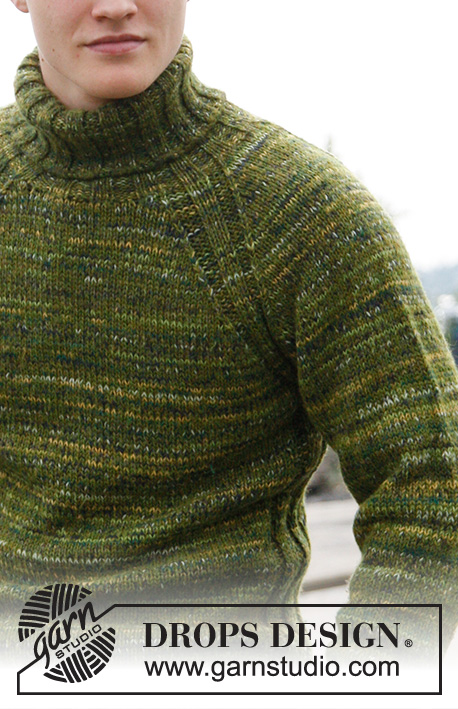 |
Knitted men's jumper with raglan and high neck, in DROPS Alpaca and DROPS Fabel. Size: S to XXXL.
DROPS 135-13 |
|
|
RAGLAN: Dec on each side of the 9 sts in rib in every transition between body and sleeves. Dec as follows from RS: BEFORE the 9 sts: K 2 tog. AFTER the 9 sts: Slip 1 st as if to K, K 1, psso. Dec as follows from WS: BEFORE the 9 sts: P 2 twisted tog (i.e. work in back loop of st instead of front). AFTER the 9 sts: P 2 tog -------------------------------------------------------- BODY: Worked in the round on circular needle. Cast on 168-180-192-204-228-252 sts on circular needle size 4 mm with 1 thread Alpaca and 1 thread Fabel. Work rib = K 3/P 3 for 7 cm. Switch to circular needle size 5 mm, work next round as follows: * K 4, K 2 tog *, repeat from *-* a total of 11-12-13-14-16-18 times, K 3, continue rib as before over the next 15 sts (= mid in the side), repeat from *-* a total of 11-12-13-14-16-18 times, K 3, then work rib over the last 15 sts as before (= mid in the other side) = 146-156-166-176-196-216 sts. Continue with rib over the 15 sts in each side and in stocking st over the remaining sts. REMEMBER THE KNITTING TENSION! When piece measures 18 cm, inc 1 st on each side of the 15 sts in rib in each side. Repeat inc every 6 cm a total of 5 times – work the inc sts in stocking st = 166-176-186-196-216-236 sts. When piece measures 46-47-48-49-50-51 cm, cast off the middle 7 sts in rib in each side = 152-162-172-182-202-222 sts remain on needle. Put piece aside and work the sleeves. SLEEVE: Worked in the round on double pointed needles. Cast on 48-48-54-54-60-60 sts on double pointed needles size 4 mm with 1 thread Alpaca and 1 thread Fabel. Work rib = K 3/P 3 for 9 cm. Switch to double pointed needles size 5 mm. Work next round as follows: Work in stocking st over the first 33-33-39-39-45-45 sts and rib as before over the last 15 sts (= mid under sleeve). When piece measures 11 cm, inc 1 st on each side of the 15 sts in rib. Repeat inc every 4-3-3½-3-3-3 cm a total of 10-12-11-13-12-13 times = 68-72-76-80-84-86 sts – work the inc sts in stocking st. When piece measures 49 cm in all sizes, cast off the 7 mid sts in rib = 61-65-69-73-77-79 sts remain on needle. Put piece aside and knit another sleeve. YOKE: Slip sleeves on to same circular needle as body where armholes were cast off = 274-292-310-328-356-380 sts. Work 1 round with K over K and P over P – AT THE SAME TIME inc 1 st in all transitions between body and sleeves (K this st) = 278-296-314-332-360-384 sts. In all transitions between body and sleeve there are now: P 3, K 3 and P 3 = 9 sts in rib. Continue to work K over K and P over P while at the same time dec for RAGLAN – see explanation above! Repeat dec on every other round a total of 17-18-18-18-18-19 times and then on every round a total of 5-6-8-10-12-12 times. AT THE SAME TIME when 5 dec remain, slip the middle 18-19-20-23-25-27 sts mid front on a stitch holder for neck. Worked back and forth on needle until finished measurements. AT THE SAME TIME cast off at the beg of every row 1 st 2 times in each side (= towards the neck). After all dec for raglan and cast offs for neck, 80-81-82-81-91-105 sts remain on needle. NECK: Switch to circular needle size 4 mm. Knit up approx. 22 to 31 sts at the front of neck (incl sts on stitch holder) = 102 to 136 sts. Work 1 round with K over K and P over P while at the same time adjusting no of sts to 102-102-102-114-114-114 (there are now 21-21-21-27-27-27 sts in stocking st over back piece, 27-27-27-33-33-33 sts in stocking st over front piece and 9 sts in stocking st over each sleeve). Continue in rib = K 3, P 3 over all sts - this should work out so that all the raglan sts can be worked as before. When neck measures approx. 20 cm, cast off with K over K and P over P. Fold the neck double towards RS. ASSEMBLY: Sew the openings under the sleeves tog. |
|

|
|
|
Have you made this or any other of our designs? Tag your pictures in social media with #dropsdesign so we can see them! Do you need help with this pattern?You'll find tutorial videos, a Comments/Questions area and more by visiting the pattern on garnstudio.com. © 1982-2024 DROPS Design A/S. We reserve all rights. This document, including all its sub-sections, has copyrights. Read more about what you can do with our patterns at the bottom of each pattern on our site. |
|
With over 40 years in knitting and crochet design, DROPS Design offers one of the most extensive collections of free patterns on the internet - translated to 17 languages. As of today we count 304 catalogues and 11422 patterns - 11415 of which are translated into English (UK/cm).
We work hard to bring you the best knitting and crochet have to offer, inspiration and advice as well as great quality yarns at incredible prices! Would you like to use our patterns for other than personal use? You can read what you are allowed to do in the Copyright text at the bottom of all our patterns. Happy crafting!








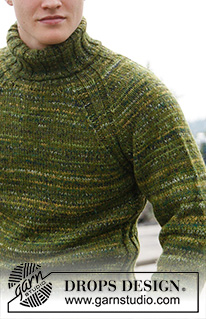





































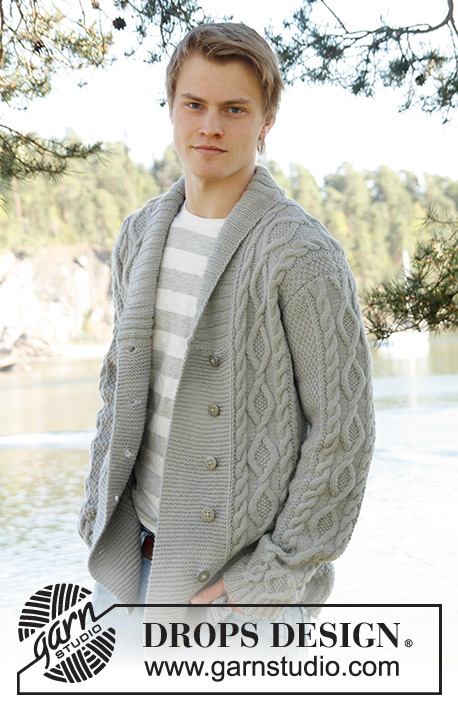




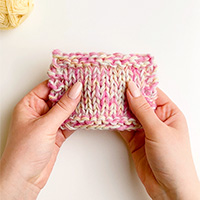

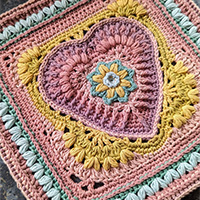
Comments / Questions (168)
Hola! Me perdi completamente luego de terminar la pechera. Estoy haciendo la version S, por lo tanto, me dice que debo deslizar los 18 puntos centrales a un gancho auxiliar. He estado tejiendo en todo momento con aguja circular. Que hago luego? tejo de ida y vuelta? no circular? Y luego remato como ahi aparece, cierto? Y si todo eso lo entendí bien, luego para seguir avanzando con el cuello no me cuadran ni los puntos, ni cuantos puntos debo levantar, como se eso? Muchas gracias!
05.03.2024 - 21:50DROPS Design answered:
Hola Dana, sí, después de pasar los puntos a un gancho auxiliar continúas tejiendo de ida y vuelta, con la misma aguja circular y rematas como se indica. A la hora de levantar los puntos levantas los puntos en el gancho auxiliar y puntos cerrados en el escote a los lados de estos puntos. No hay un número exacto de puntos a levantar; tiene que ser entre 22 y 31 (por lo tanto, tendrás entre 102 y 111 puntos en tu talla, sumando los 80 en la aguja) y puedes coger más o menos puntos para obtener la forma correcta del cuello y que no quede demasiado tenso. Después trabajas el elástico y ahí ajustarás el número de puntos al necesario para el patrón.
10.03.2024 - 21:08Per il davanti/dietro il numero di maglie che si ottiene dopo gli aumenti ai lati dovrebbe essere superiore di 20 rispetto al numero di partenza visto che si aggiunge 1 maglia da ciascun lato delle due sezioni di coste per 5 volte, quindi 2x2x5. Quello indicato ne aggiunge solo 10.
11.02.2024 - 18:37DROPS Design answered:
Buonasera Silvia, gli aumenti sono corretti, ad esempio per la taglia S si passa da 146 a 166 maglie. Buon lavoro!
25.02.2024 - 21:53Viele Dank für die Antwort auf meine Frage zur Zunahme. Meine Anmerkung zur Garnmenge irritiert mich allerdings. Ich benötige von jeder Sorte laut Anleitung 450 gr. Alpaca Lauflänge 167 m auf 50 g = 1503 m Fabel Lauflänge 205 m auf 50 g = 1845 m Da die Garne parallellaufend gestrickt werden ist wohl klar entweder ist hier einiges an Garn zu viel oder zu wenig. Maschenprobe hin oder her. (Maschenprobe mache ich im übrigen immer)
28.02.2023 - 19:02Ist es möglich, dass bei der Zunahme im Vorder- und Rückenteil ein Fehler vorliegt? Man soll nach 18 cm zunehmen, alle 6 cm. Ergibt für mich 5 x die Möglichkeit der Zunahme bei einer Höhe von 49 cm. Also 10 Maschen und nicht 20. Außerdem hat das Drops Fabel Garn eine größere Lauflänge = 38 Meter. Bedeutet, dass ich weniger benötige als vom Alpaca und nicht, wie angegeben gleiche Menge. Danke!
28.02.2023 - 07:47DROPS Design answered:
Liebe Yvonne, die 1. Zunahme stricken Sie nach 18 cm, die 2. nach 24 cm, die 3. nach 30 cm, die 4. nach 36 cm und die 5. nach 42 cm. So sind es insgesamt 4 Maschen zugenommen x 5 = 20 Zunahmen. Die gesamte Garnmenge solte für beide Garne stimmen (beachten Sie, daß Ihre Maschenprobe stimmt). Viel Spaß beim stricken!
28.02.2023 - 10:58Onder het kopje “raglan” spreekt men van een goede en verkeerde kant. Maar ik brei rond op een rondbreinaald, dus dan heb ik toch alleen maar een goede kant? Alvast bedankt voor uw reactie. Met vriendelijke groet Mirella Kort
18.02.2023 - 21:51DROPS Design answered:
Dag Mirella,
Op een gegeven moment ga je op het voorpand afkanten voor de hals, zodat de hals aan de voorkant lager is dan aan de achterkant. Op dat moment brei je heen en weer en moet je waarschijnlijk ook nog minderingen maken voor de raglan.
19.02.2023 - 16:57Heißt Drops Alpaca 7238 oliv Mix jetzt grasgrün?\r\nHeißt Drops Fabel 432p grün Mix jetzt grün?\r\nKurz gefragt: Stimmen die Nummern auch wenn die Bezeichnung anders ist?
23.01.2023 - 09:44DROPS Design answered:
Liebe Frau Weidenbach, folgen Sie immer die Farbennummer, die Namen können angepasst werden. Viel Spaß beim stricken!
23.01.2023 - 10:21Er der altervativer til det garn, der skal bruges???? garn der ikke kradser????
19.01.2023 - 15:09DROPS Design answered:
Hej Vivi, ja du kan strikke den i 2 tråde DROPS Baby Merino :)
08.03.2023 - 10:03Er der alternativer til det garn der skal bruges???? garn. der ikke kradser
19.01.2023 - 15:07Hebben jullie dit patroon ook van boven naar beneden breien?
30.12.2022 - 14:31DROPS Design answered:
Dag Andrea,
Nee, dit patroon is helaas alleen van beneden naar boven.
01.01.2023 - 10:44Cortesemente avrei bisogno di aiuto. ho messo su un fermamaglie 27 maglie per il collo ma non so cone andare avanti. C'è scritto lavorare avanti e indietro fino alle fine ma non capisco. in mezzo c'è il fermamaglie. come devo procedere? grazie mille
29.12.2022 - 14:32DROPS Design answered:
Buonasera Elisa, sta lavorando ancora lo sprone? Dopo aver messo in sospeso le maglie per il collo, deve proseguire la lavorazione in piano e non in tondo, quindi lavora sulle maglie avanti e indietro, senza lavorare le maglie sul fermamaglie, che verranno riprese con la lavorazione del collo. Buon lavoro!
29.12.2022 - 19:10